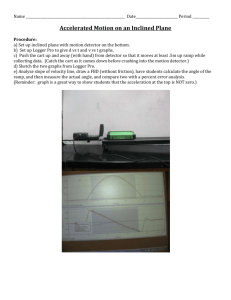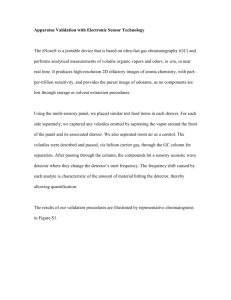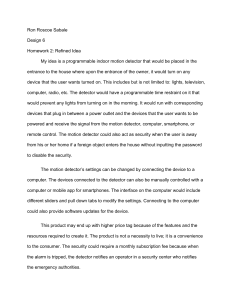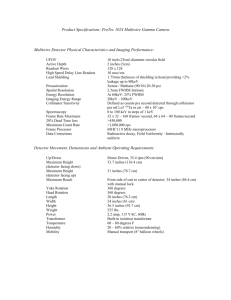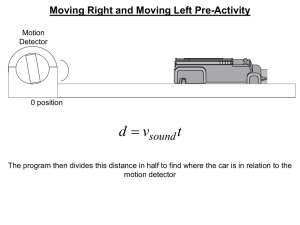SAXS Predictor
advertisement
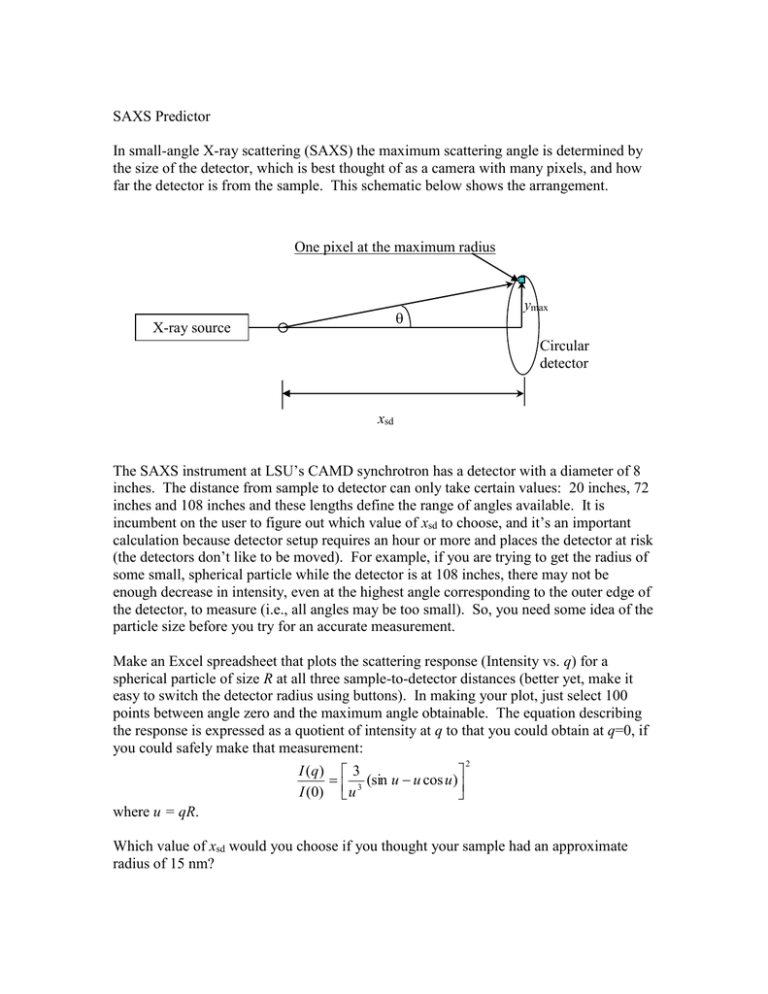
SAXS Predictor In small-angle X-ray scattering (SAXS) the maximum scattering angle is determined by the size of the detector, which is best thought of as a camera with many pixels, and how far the detector is from the sample. This schematic below shows the arrangement. One pixel at the maximum radius ymax X-ray source Circular detector xsd The SAXS instrument at LSU’s CAMD synchrotron has a detector with a diameter of 8 inches. The distance from sample to detector can only take certain values: 20 inches, 72 inches and 108 inches and these lengths define the range of angles available. It is incumbent on the user to figure out which value of xsd to choose, and it’s an important calculation because detector setup requires an hour or more and places the detector at risk (the detectors don’t like to be moved). For example, if you are trying to get the radius of some small, spherical particle while the detector is at 108 inches, there may not be enough decrease in intensity, even at the highest angle corresponding to the outer edge of the detector, to measure (i.e., all angles may be too small). So, you need some idea of the particle size before you try for an accurate measurement. Make an Excel spreadsheet that plots the scattering response (Intensity vs. q) for a spherical particle of size R at all three sample-to-detector distances (better yet, make it easy to switch the detector radius using buttons). In making your plot, just select 100 points between angle zero and the maximum angle obtainable. The equation describing the response is expressed as a quotient of intensity at q to that you could obtain at q=0, if you could safely make that measurement: I (q) 3 3 (sin u u cos u ) I (0) u 2 where u = qR. Which value of xsd would you choose if you thought your sample had an approximate radius of 15 nm?

